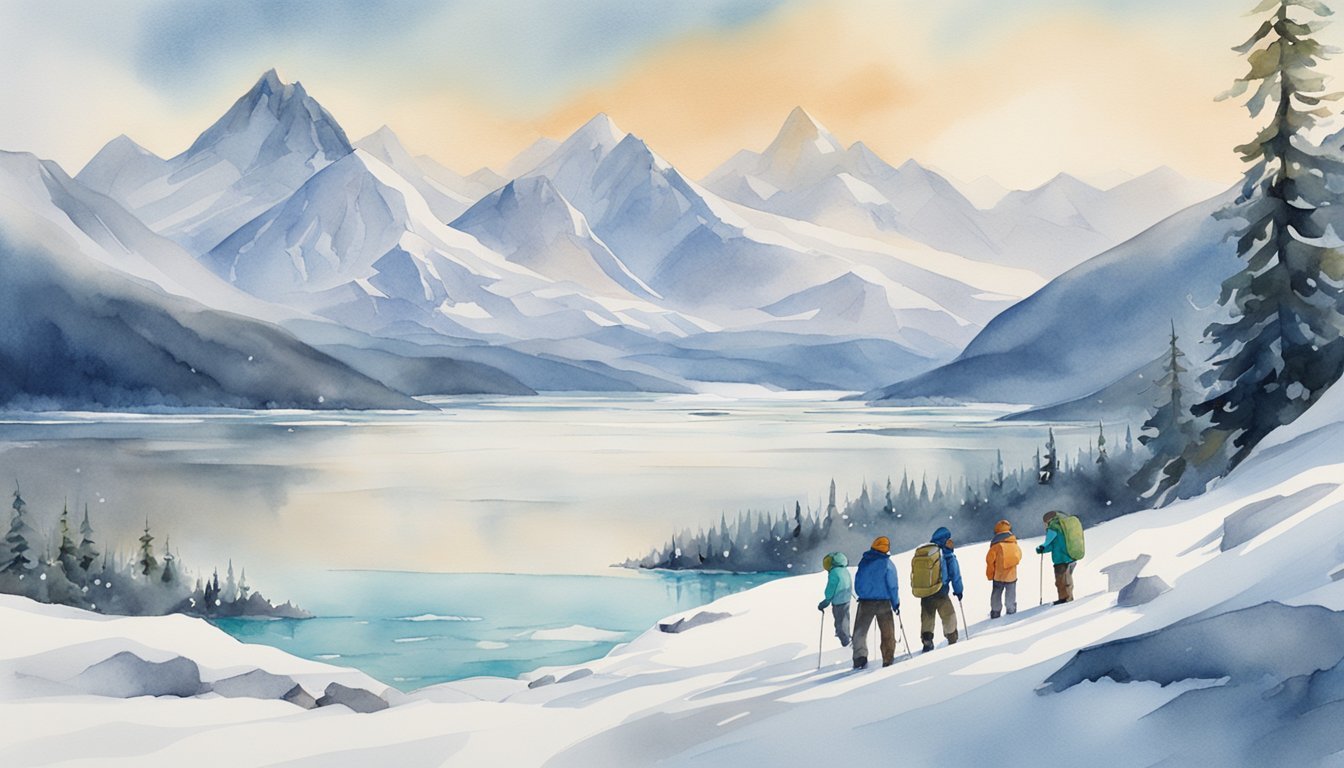Understanding Extreme Cold
Defining Cold and Its Measurement
Cold refers to low temperatures or a sensation of having little heat. One of the most common ways to measure these low temperatures is using the Celsius or Fahrenheit scale. Some of the coldest regions on Earth experience temperatures well below freezing, even reaching into the negatives. In the natural world, understanding the distribution and impact of cold temperatures is vital for assessing the planet’s climate, geography, and ecosystems.
Exploring the Coldest Places on Earth
There are several contenders for the title of the coldest place on Earth. One of the most notable is Oymyakon, Siberia, Russia, which holds the record as the coldest permanently-inhabited place on Earth, with temperatures dropping as low as -67.7°C. In Antarctica, researchers have identified a high ridge on the East Antarctic Plateau as one of the coldest locations on the planet, where temperatures can dip below -133.6°F (-92°C) in shallow depressions during clear winter nights.
The Role of Geography in Cold Temperatures
Geography plays a pivotal role in determining the distribution of cold temperatures across Earth. For instance, temperature sinks are created when cold air gets trapped in valleys or low-lying areas, leading to extremely low temperatures. Factors such as altitude, latitude, and proximity to oceans can also influence the severity of cold climates. The places that tend to see the coldest temperatures typically lie at high latitudes, far from bodies of water, but atmospheric conditions such as polar vortexes can lead to unusually low temperatures even at mid-latitudes.
Scientific Studies on Cold Climates
Scientists are always striving to learn more about Earth’s most extreme temperatures and how they affect our climate, ecosystems, and even the broader solar system. Recent satellite measurements have shown that the Earth’s surface can get as cold as about -144°F in the coldest known place. Studying cold climates and extreme weather events can help us better understand the changes taking place in the atmosphere and how they may affect various aspects of the natural world, such as glacier retreat, permafrost thawing, and changes in ecosystems.
Life and Research in Frigid Zones

Human and Wildlife Adaptations
In the frigid zones of our planet, such as Antarctica, life has adapted to survive the extreme cold. The East Antarctic Plateau is known as the coldest place on Earth, where temperatures can drop to between -92 and -94 degrees Celsius. Despite the harsh conditions, humans have established research stations, such as the Vostok Station, to study these extreme environments. College students and researchers from various institutions, including the University of Colorado Boulder, have conducted studies to better understand these cold regions.
Organisms in Antarctica, such as penguins and seals, have developed unique adaptations to thrive in the extreme cold. These wildlife species have evolved thick layers of insulation, such as blubber and feathers, to retain body heat. They also display unique behaviors, like huddling together for warmth, to combat the extreme temperatures.
Impacts of Cold on Health
Living in extremely cold environments can have severe effects on human health. Exposure to cold can cause frostbite, hypothermia, and other cold-related conditions. Researchers and staff at Antarctic research facilities, such as the Amundsen-Scott Station, must take special precautions and wear protective gear to stay safe in the harsh conditions.
Climate Research and Monitoring Stations
Scientists conduct climate research in the coldest regions of the Earth using monitoring stations equipped with sophisticated instruments. These stations collect data on various aspects of the environment, such as temperature, humidity, and atmospheric pressure. This data helps researchers understand the mechanisms behind climate change and develop strategies to mitigate its impacts. Some of the major research stations in Antarctica include the Vostok Station, Amundsen-Scott Station, and various weather stations operated by NASA.
- Temperature
- Humidity
- Atmospheric pressure
Future of Coldest Habitats Amid Climate Change
Climate change poses a significant threat to the coldest habitats on Earth, with rising greenhouse gas levels causing global warming. Rapid warming of these regions could lead to widespread melting of ice, disrupting the surrounding ecosystems. As the scientific community works to better understand the ongoing changes, research efforts will likely focus on developing strategies to mitigate the impacts of climate change on these fragile environments and the species that inhabit them.

